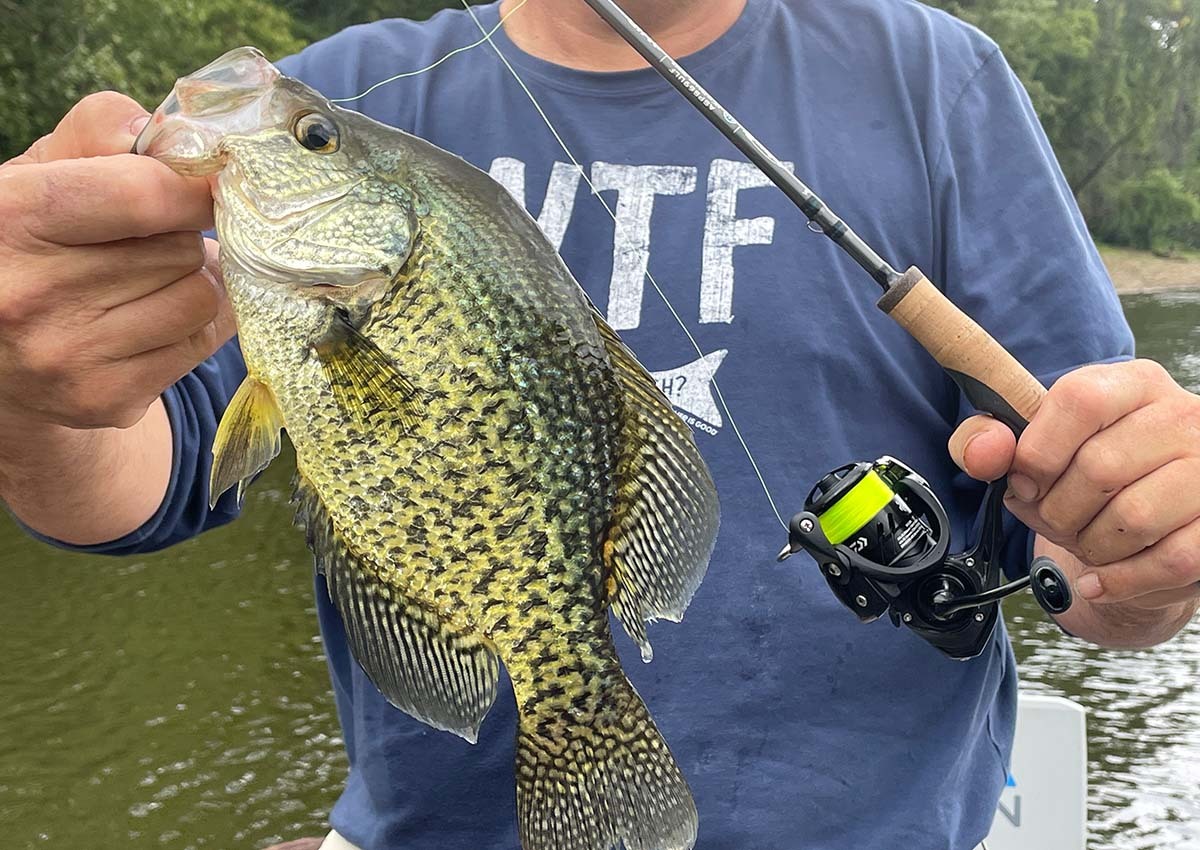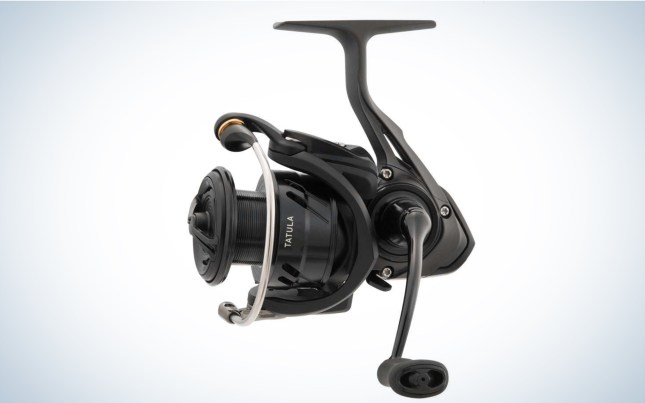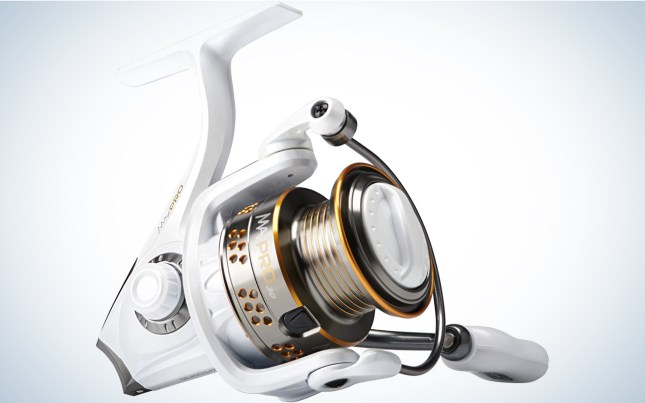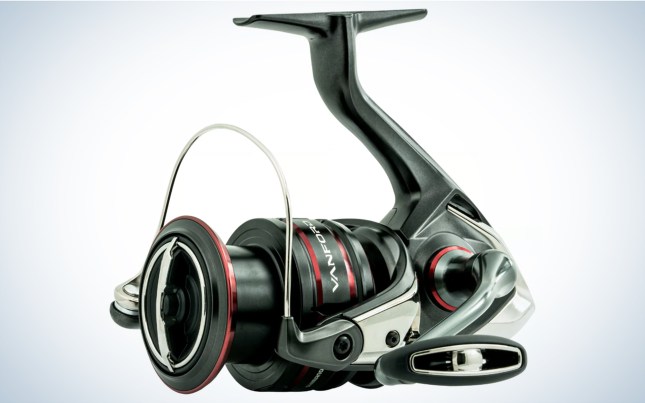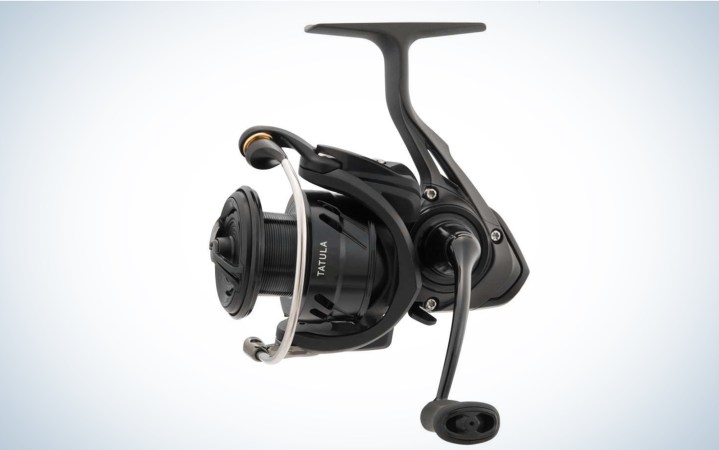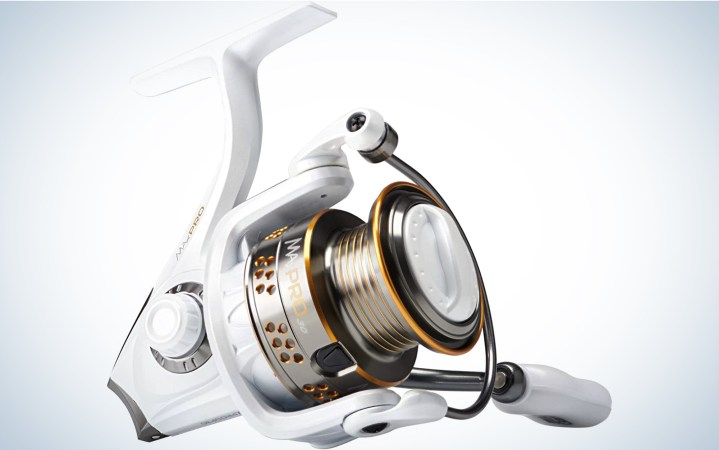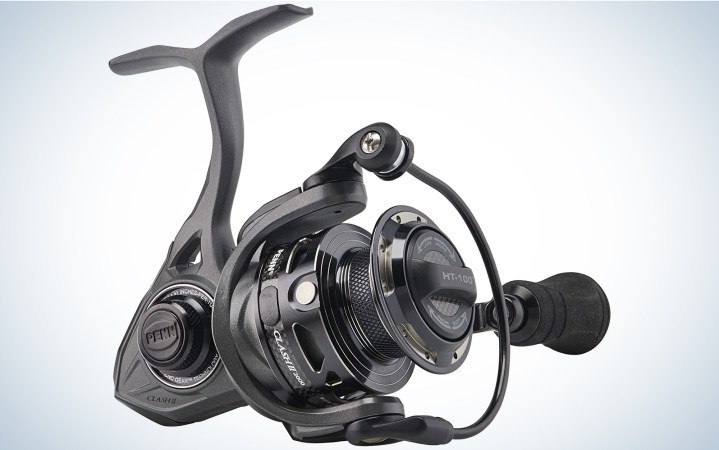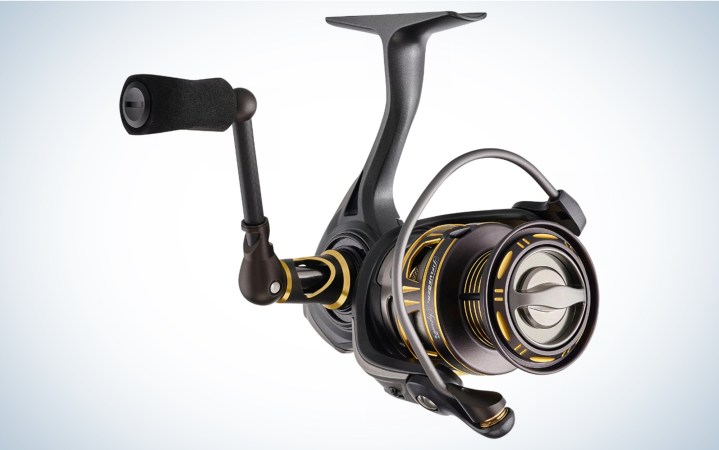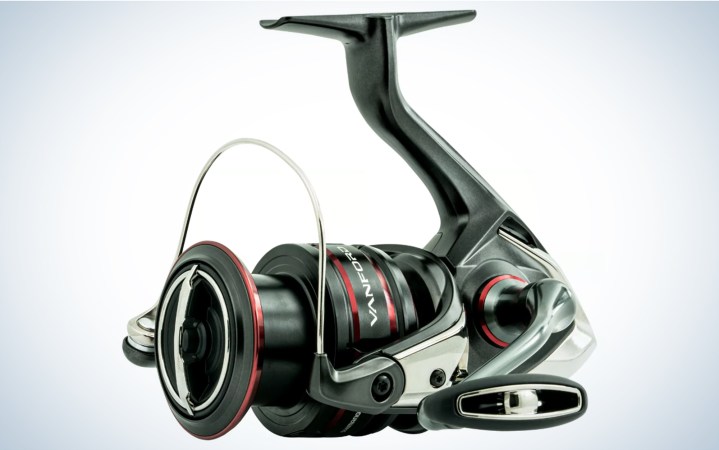We may earn revenue from the products available on this page and participate in affiliate programs. Learn More ›
You won’t use ultralight spinning reels to win the Bassmaster Classic, but you will use them for some of the most fun fishing around. From panfish to trout, ultralight reels are the workhorse of cooler filling fun.
I tested ultralight spinning reels extensively on a variety of species, including bluegills, crappies, sheepshead (drum), walleyes, bass, and pike. During testing, I evaluated the reels on their weight, size, materials, retrieval speed, and pounds of drag pressure. I coupled each with a St. Croix AVID Panfish rod and spooled each reel with Sufix Advance 4-pound monofilament to standardize my findings and level the playing field.
From that testing, here are my picks for the best ultralight spinning reels:
- Best Overall: Daiwa Tatula LT 1000D-XH
- Best Budget: Abu Garcia Max Pro 5
- Most Durable: Penn Clash II 1000
- Best Ergonomics: Pflueger Supreme XT 25
- Best Ice Fishing Reel: Shimano Vanford VF500F
Best Overall: Daiwa Tatula LT 1000D-XH
Why It Made the Cut
The design, construction, 11 pounds (the most in this review) of maximum drag, large spool for long casts with light lures, and feathery 5.8-ounce weight, makes the Tatula LT 1000D-XH the best overall ultralight reel.
Key Features
- Woven high-density carbon resin body
- Air rotor and air bail
- Fold-down handle
- 5+1 ball bearings
- Gear Ratio: 6.2:1
- Max drag: 11 pounds
- Line capacity: 250 yards (4-pound mono) 160 yards (6-pound mono)
- Weight: 5.8 ounces
Pros
- Easy to palm
- Smooth drag
- Quick drag inertia start-up when a fish is on
- Extremely lightweight
Cons
- Only comes with one spool
Product Description
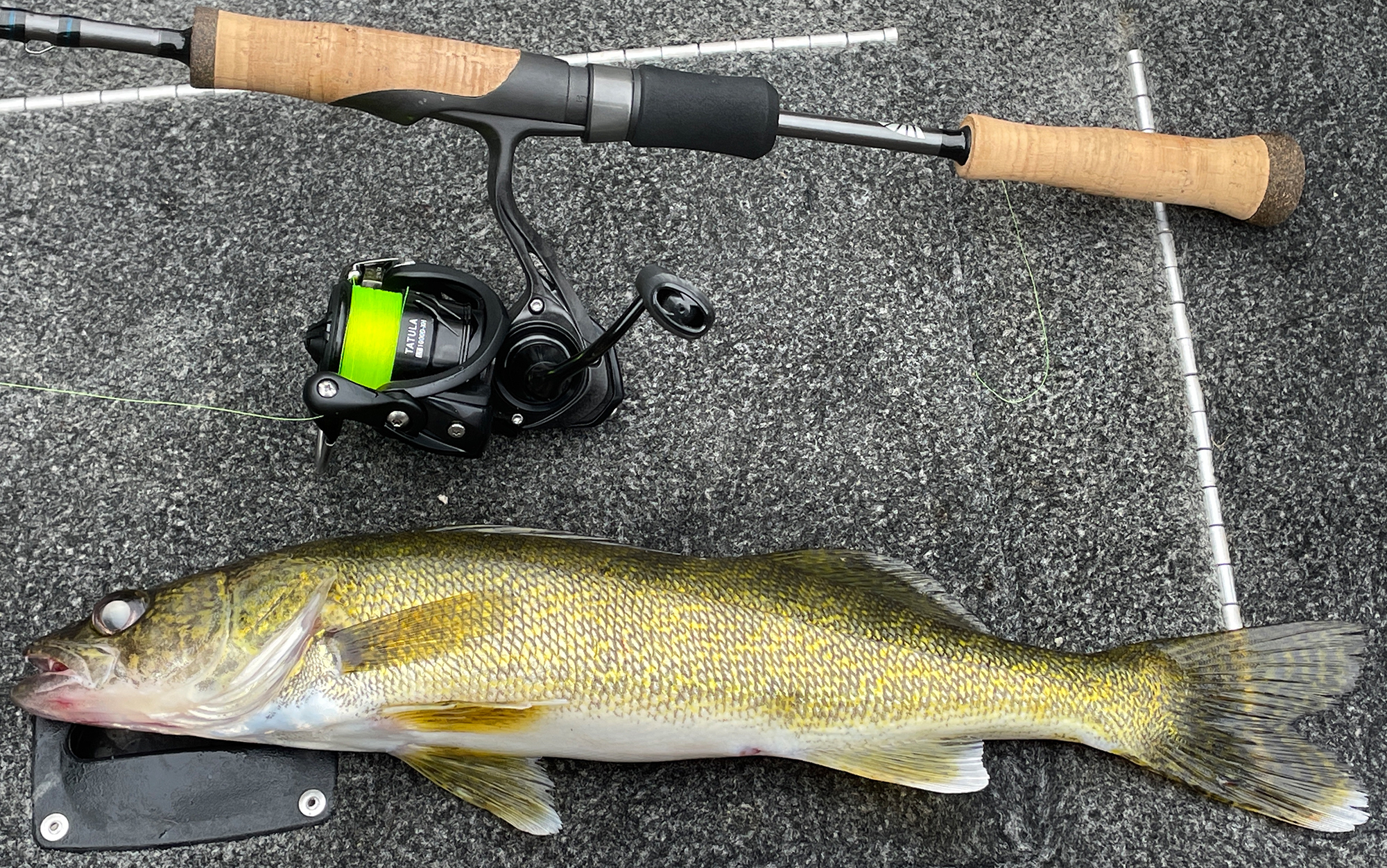
The “LT” in Daiwa Tatula LT 1000D-XH stands for “light” and “tough,” and the reel is precisely that. Constructed of Daiwa’s high-density carbon ZAION material, the result is an incredibly light reel while remaining rigid and strong. The Daiwa Tatula LT 1000D-XH also features a ZAION Air Rotor for weight reduction and added rigidity, making the Daiwa Tatula lighter and easier to handle without fatigue over the long course of a full day of fishing.
The Tatula LT was my top pick because of its value and performance. What I liked most about it was the drag pressure (11 pounds) and quick drag start-up inertia from the first bend in the rod tip. The reel handled everything from panfish to walleyes, bass, smaller northern pike, and sheepshead with ease. The larger specimens I caught on my Mississippi River trip tested the drag, which remained buttery smooth. Matched with a feathery rod like the St. Croix AVID Panfish, the diminutive 5.8-ounce reel weight proved a great fit to keep the entire setup light in hand with maximum sensitivity.
Best Budget: Abu Garcia Max Pro 5
Why It Made the Cut
The Max Pro 5 has excellent performance for a reel around $60. It would also make a superb choice for rigging up a half-dozen or more ice rods when you have to buy several reels at a time.
Key Features
- 6 ball bearings + 1 roller bearing
- Machined aluminum spool
- Instant anti-reverse
- Interchangeable reel handle
- Gear ratio: 5.2:1
- Maximum drag: 6.4 pounds
- Weight: 6.2 ounces
- Line Capacity: 190 yards (2-pound mono) 80 yards (6-pound mono)
Pros
- Lightweight
- Far, smooth casting despite a smaller spool
- Silent, smooth drag
- Extra-large handle grip
- Slow oscillation provides even line lay with all types of fishing line
Cons
- No braking system
- Felt drag system
- Only 20.5-inches per handle turn
Product Description
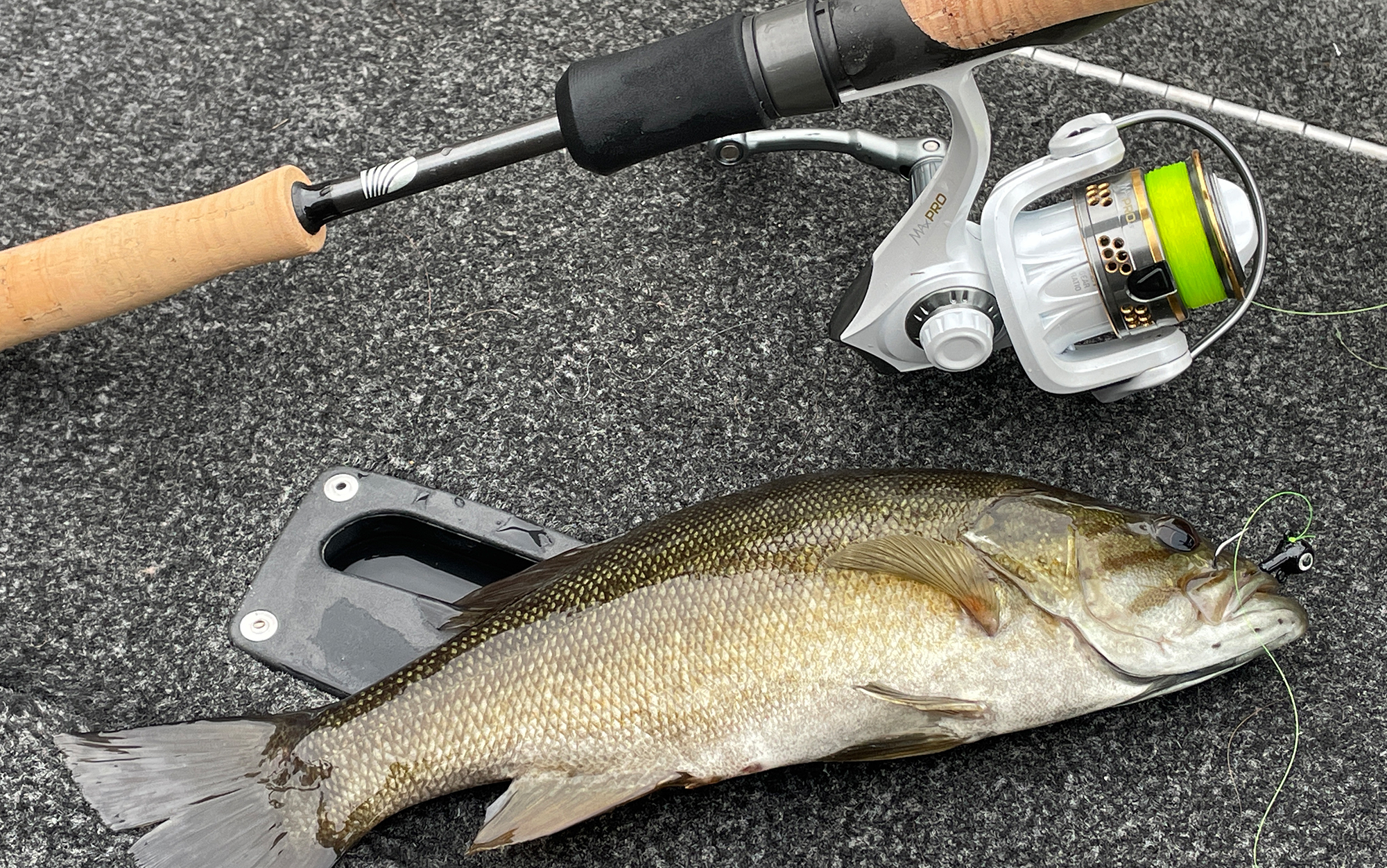
The Abu Garcia Max Pro 5 offers serious performance for an affordable price—around $60. The reel is a great budget pick, and the drag was impressive for the price and felt construction, handling fish between one and ten pounds admirably. If you need to buy several ultralight reels to outfit a family for fishing, I don’t think you could go wrong with this particular model. What I liked about it—which would translate well to ice fishing panfish rods—is it’s smaller than the other reels that I tested. It would pair well with extremely ultra-light fishing rods. Especially for panfish and trout, this reel would perform admirably. What I didn’t like about it was the small spool and limited 20.5-inches of line pickup per handle turn, which is a trade-off for the small size.
Most Durable: Penn Clash II 1000
Why It Made the Cut
Penn offers supreme performance in its larger spinning reels but would that translate to a smaller offering? The answer I discovered was yes. The construction of this reel absolutely stands out, with superior frame rigidity and the overall reel feeling solid and designed for years of trouble-free performance.
Key Features
- Front drag system
- Instant anti-reverse
- 9 total ball bearings
- Right/left handle
- HT-100 carbon fiber drag
- Max Drag: 9 pounds
Pros
- Silent and smooth drag
- Oversized, tacky handle knob made fighting fish easy
- Durable
Cons
- A little larger and slightly heavier than the competition
- No braking system
- Bail was a little sticky flipping it over to cast
Product Description
Designed as an inshore reel for chasing fish like redfish, snook, and flounder, the Clash II family’s construction is what you’d come to expect from Penn—absolutely bulletproof.
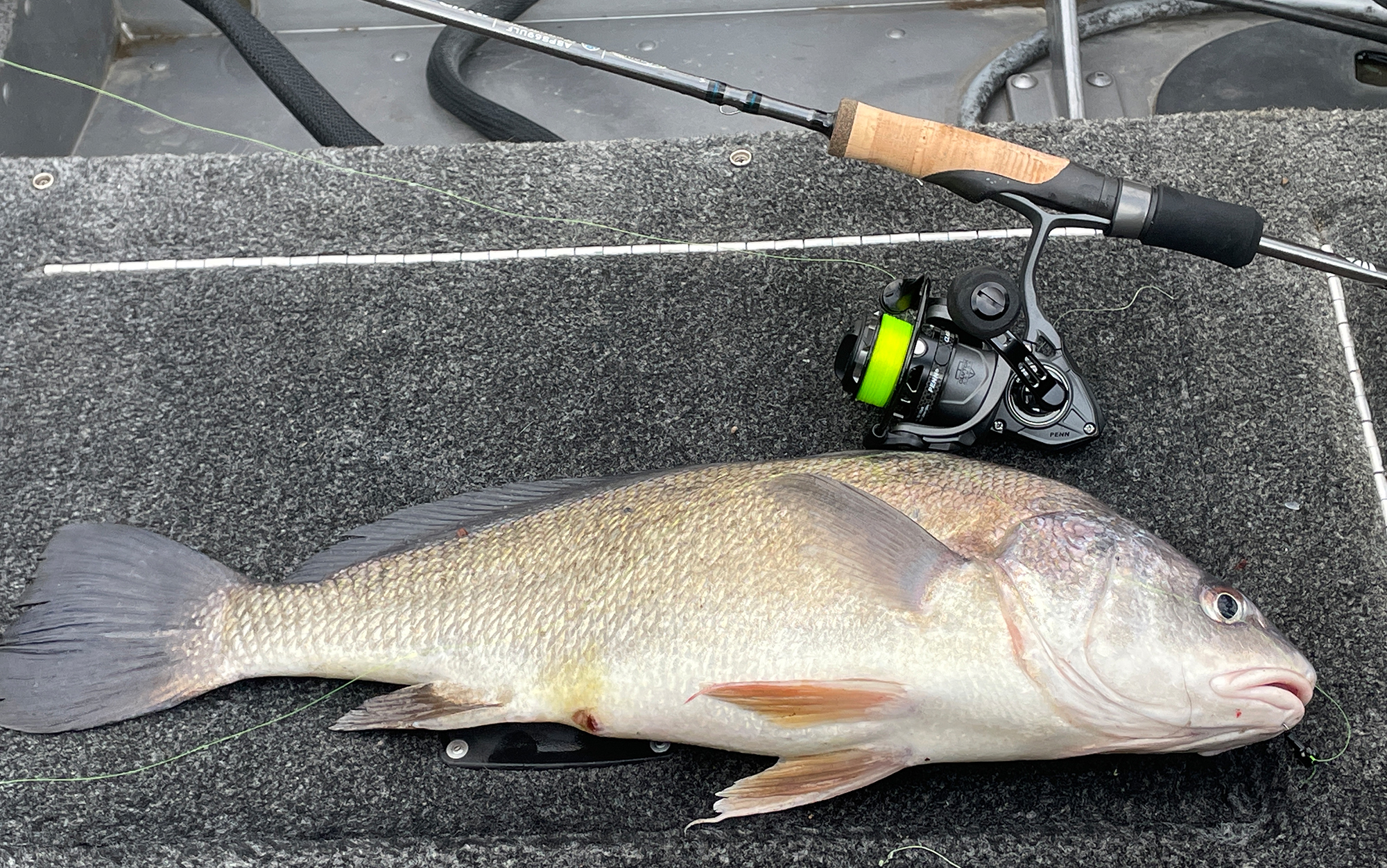
During my testing, I really fell in love with this reel. The drag was smooth and quick to start-up and handled a wide array of fish: panfish, walleyes, smallmouth bass, sheepshead, and more. An oversized and easy-gripped handle made fighting fish fun and offered a sense of security on each turn of the handle.
However, unlike the other 1000-size ultralight reels in this review, the Penn Clash II 1000 is a bit larger in size—while still maintaining light weight—but it felt more like the footprint of a standard 2000-size reel. If you’re looking for the most durable reel among the best ultralight spinning reels, then the Clash II should be high on your list.
Best Ergonomics: Pflueger Supreme XT 25
Why It Made the Cut
The Pflueger Supreme XT 25 stands out for its good looks and easy palmability.
Key Features
- Instant anti-reverse
- 11 total ball bearings
- Sealed carbon drag
- Front drag system
- Max drag: 8 pounds
- 22.4 inches of line recovery per handle turn
- Right/left handle
- Weight: 6 ounces
- Line Capacity: 220 yards (2-pound mono) 90 yards (6-pound mono)
Pros
- Affordable
Cons
- No spare spool
Product Description
The Supreme XT 25‘s super-light magnesium frame and carbon rotor, machined aluminum gearing, braid-ready aluminum spool, and sealed carbon drag are perfect for all freshwater situations. The gear ratio is 5.2:1 with slow oscillation to prevent overworking finesse baits and keep fish hooked.

Such was the case during testing on the Mississippi River. The Supreme XT 25 handled a variety of fish species and the drag always felt sufficient. I liked the smooth rotation of the spool, easy, problem-free line pick-up via well-designed bail roller system and its overall feel. It’s also one cool-looking reel. The only issue I had with it was the bail seemed a little rough turning over to cast and close to begin reeling in.
Best Ice Fishing Reel: Shimano Vanford VF500F
Why It Made the Cut
I think this reel really shines on hard water as a go-to, reliable, and weather-resistant ice fishing reel paired with a lightweight, mid- to high-quality ice fishing rod.
Key Features
- Built on a Shimano Stradic CI4+ body
- HAGANE gear
- Instant anti-reverse
- 6+1 total ball bearings
- Sealed carbon drag
- Max drag: 6 pounds
- Front drag system
- 27 inches of line recovery per handle turn
- Right/left handle
- Weight: 4.9 ounces
- Line Capacity: 190 yards (2-pound mono) 60 yards (6-pound mono)
Pros
- Easy, long casts
- Smooth handle rotation
Cons
- No spare spool
Product Description
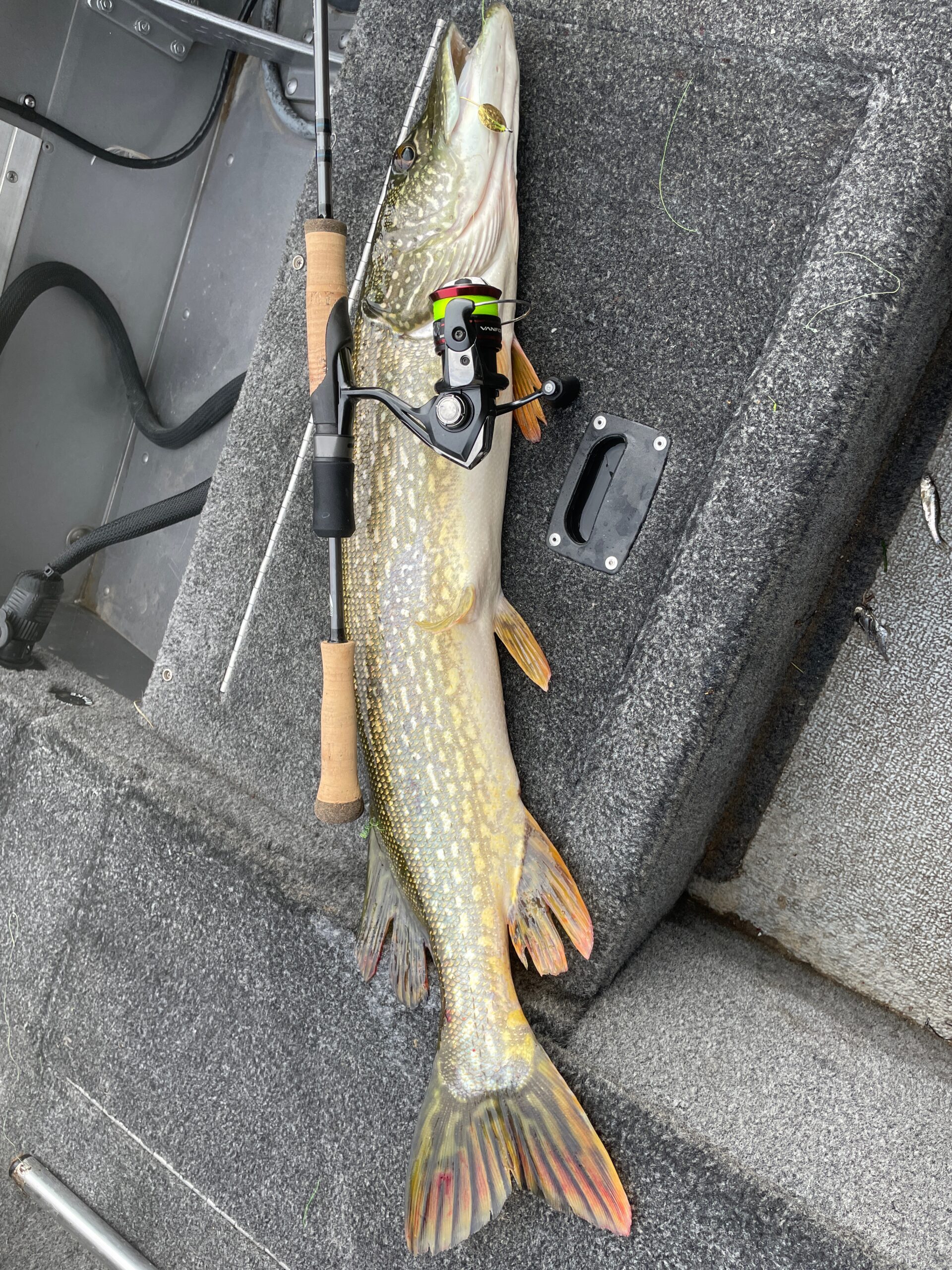
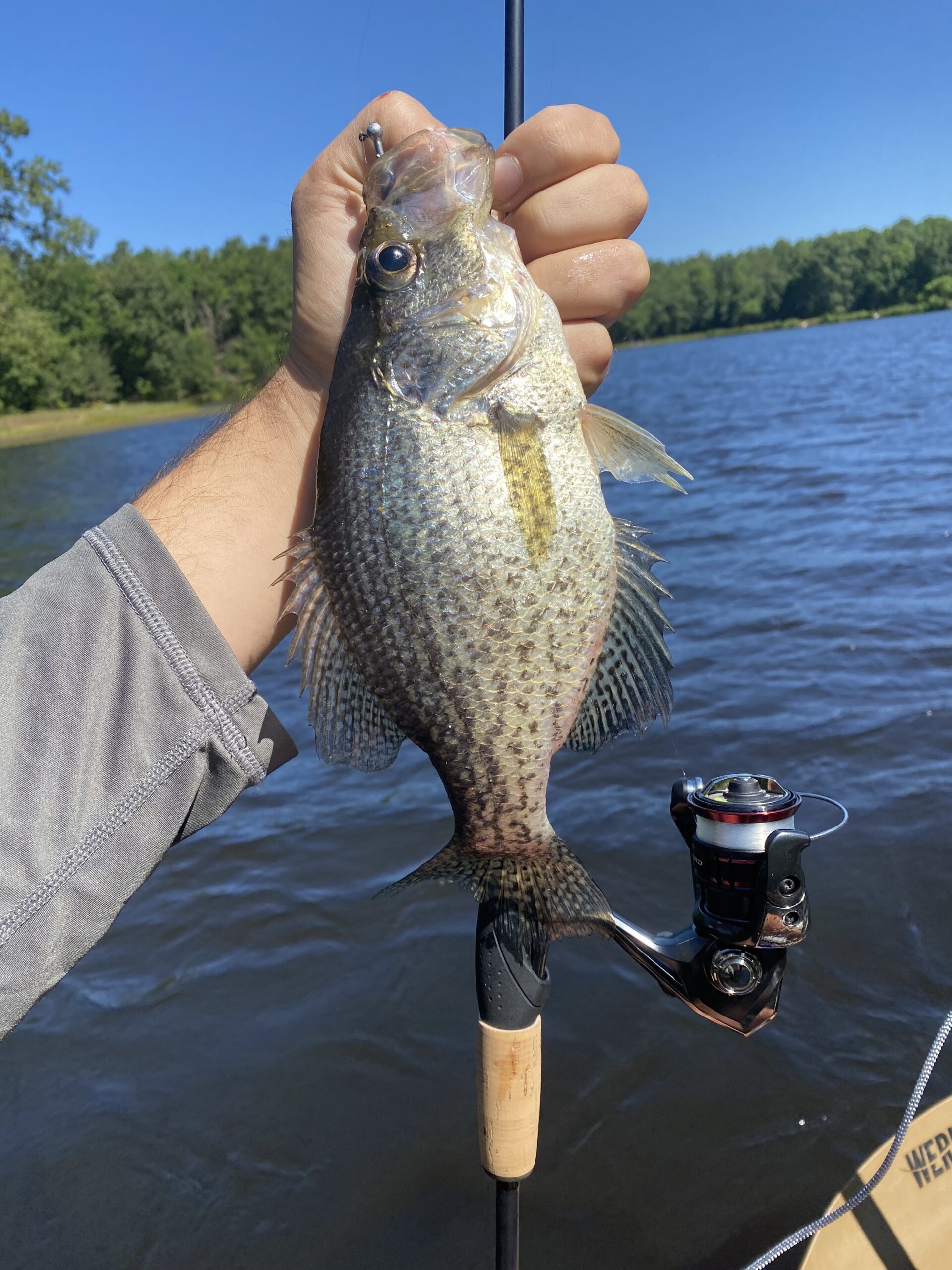
During testing I was surprised by the distance I could throw ⅛-ounce jigs on 4-pound test despite the Vanford‘s smaller spool. The line flowed off the spool flawlessly, and the bail and bail rotor performed smooth as silk. The drag—a little on the low side at six pounds—was quick to start-up and feed line to pulling fish. I think the increased drag pressure in a 1000-size Vanford would be helpful for my area where catching larger fish species is common, even when targeting bluegills, crappies, and perch. Overall, the Vanford is a great reel. I do wish, however—like the rest of the ultralight reels tested—that the reel came with an extra spool.
Things to Consider Before Buying an Ultralight Spinning Reel
The best ultralight reels are lightweight, have good line capacity, cast smoothly, and can fight fish with light line.
Drag
Ultralight reels are typically spooled with light line—less than 6 pounds—and they’re used to catch everything from small panfish to large trout in swift current. That’s why they need a good drag that can help fight fish without breaking the line. Look for reels with smooth drags and enough drag pressure to put the breaks on the fish you’re targeting.
Weight
A super light reel isn’t always best. That’s because a reel should balance on the rod. If you have a 9-foot crappie rod, a reel that’s on the heavier side isn’t a bad option to move the balance point to over your index finger. Likewise, on a 5-foot 6-inch rod a light reel will balance the rod and aid in casting comfort.
Spool Size
The reel’s line capacity should match your pursuit and preferred tactic. More line capacity is beneficial if you’re deep jigging or catching hard-charging fish. But if you’re making a 60-foot cast for bluegill, you don’t need a ton of line capacity.
Gear Ratio
A reel’s gear ratio will determine how quickly it can retrieve a lure. Some anglers will prefer a reel that can quickly bring in their line, while others want a reel that promotes a slower retrieve.
Multi-Use
It should be noted that purchasing a 1000-size ultralight spinning reel provides many options for finesse fishing in open water and translates well to setting up ice fishing rods. Personally, come winter, I move my ultralight reels off their open-water spinning rods to ice fishing rods, which are then used seasonally for hard water fishing.
Cost
How much should you expect to pay for a quality 500 or 1000-size ultralight reel? Most quality models fall between $70 and $250, although there are a host of cheaper products available and even more expensive reels on the market today.
FAQs
Ultralight reels are used for pairing with ultralight rods. Anglers commonly use ultralight setups for panfish and trout.
You can certainly catch bass on an ultralight, but many of the best bass lures cannot be effectively fished with an ultralight setup.
The 1000 size is slightly larger than the 500 ultralight reel and it can be used for instances when you need more drag, more line capacity, or a larger reel to balance a longer rod.
Final Thoughts
Whether you’re ultralight fishing for panfish or trout or sizing down in reels to present finesse baits to species like smallmouth bass or walleyes, one of the best ultralight spinning reels on my list will work for you.
Methodology
I tested the above reels for two full days on the Mississippi River in Minnesota. In this multi-species fishery, it’s not uncommon to catch as many as 8 or 10 fish species in one outing. I couldn’t think of a better place to test ultralight reels than in waters where you could easily catch a walleye, sauger, smallmouth or largemouth bass, white bass, northern pike, crappie, bluegill, sheepshead, carp, redhorse sucker, and more.
Gear Used in Testing
I fished out of a Lund Pro Guide 1875, drifting current seams in everything from 3 to 12 feet of water, areas with rock, sand, and gravel bottoms, and lots of baitfish present. Matching the hatch, I fished Northland Fishing Tackle 1/8-ounce short-shank Fire-Ball jigs tipped with a fathead minnow, JB Lures 1/8-ounce Gem-N-Eye ice fishing jigs tipped with a fathead minnow, as well as a BFISHNTACKLE Pro Series Slender Spoon in hammered nickel. All reels were paired with a 6 foot 9 inch ultra-light power, fast action St. Croix AVID Panfish rod(ASPS69ULF), which is one of the best crappie rods. The reels were spooled with high-visibility lime-green Sufix Advance Monofilament in 4-pound test to detect the slightest of bites.
Fishing
While testing the reels, we caught walleyes, saugers, smallmouth bass, crappies, carp, sheepshead (drum), northern pike, and channel catfish. All reels tested admirably, even in slight to faster current. Standout fish included a 5- to 6-pound northern pike caught on the Shimano Vanford, a 4-pound walleye caught on the Penn Clash II, a 10-pound carp caught on the Abu Garcia Max Pro, and a 4-pound walleye caught on the Daiwa Tatula. The drag on each of the reels did exactly what it was supposed to do—and kept the fish buttoned until the landing net was hoisted with fins into the boat.
Reels
We took five reels into consideration for the purpose of this feature—reels manufactured by Abu Garcia, Daiwa, Penn, Pflueger, and Shimano. Honestly, given the technology that goes into reel design today, there wasn’t a bad reel in the bunch, although certain features of each reel stood out.
Drag
Drag is a big consideration, especially in such a diminutive reel. You might go fishing for bluegills, perch, sunfish, or small trout or bass, but the reality is there’s a good chance you’re going to hook into something larger; hence, our testing on the Mississippi River with fish of all species and size. That’s where drag comes in. Did all of the reels perform? Yes, they did, even with the larger fish caught, although the Daiwa Tatula 1000 offers the highest drag pressure of the lot, with 11 pounds of maximum drag, 6 pounds in the Shimano, 8 pounds in the Pflueger, 9 pounds in the Penn, and 6.4 pounds in the Abu Garcia. The Daiwa Tatula is also buttery smooth in rotation, compact in size, and comes in neck-to-neck with Shimano’s Vanford for the lightest reel in the group, although that’s comparing a 1000-size reel with a 500-size reel.
